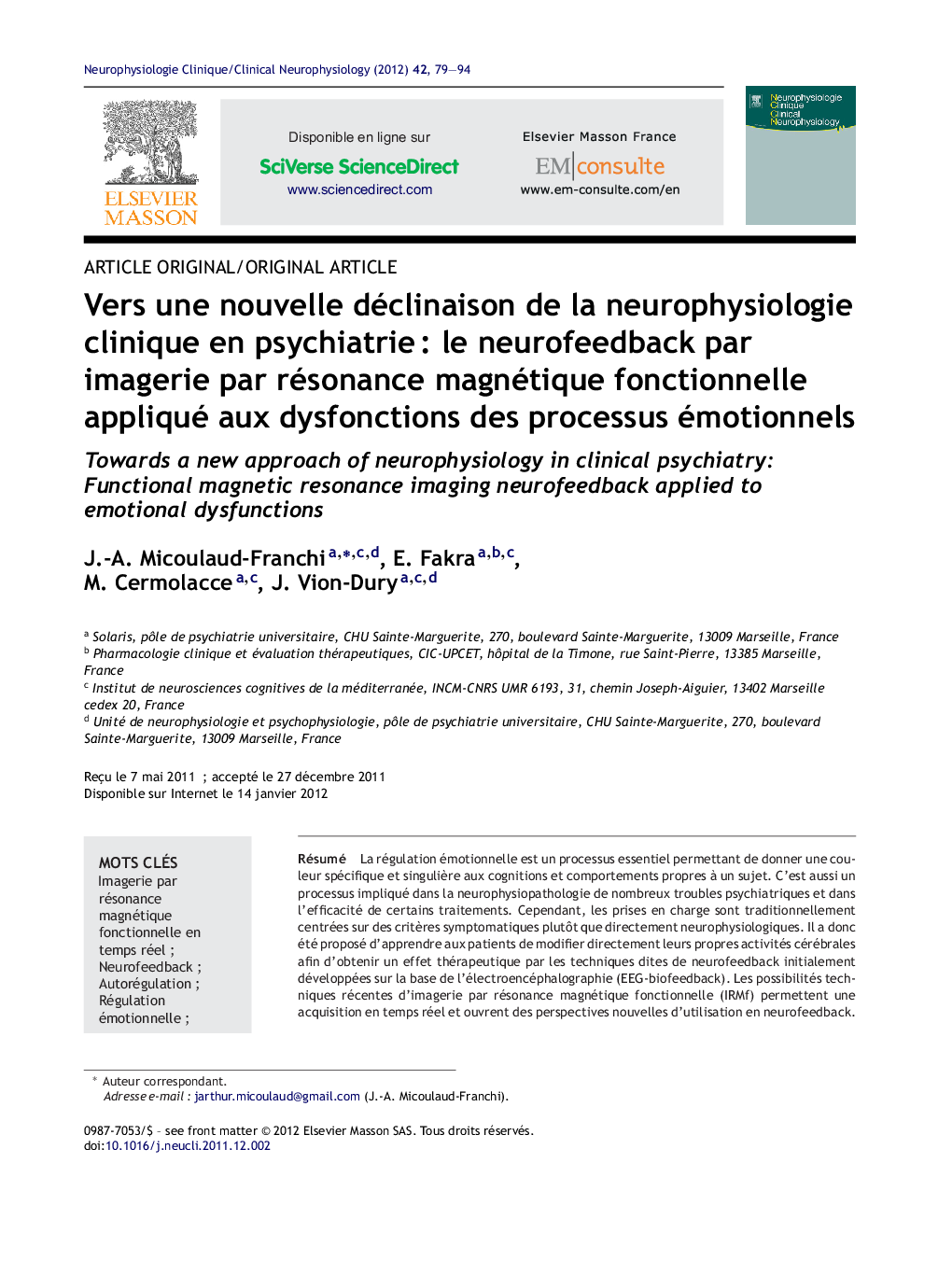| Article ID | Journal | Published Year | Pages | File Type |
|---|---|---|---|---|
| 3082833 | Neurophysiologie Clinique/Clinical Neurophysiology | 2012 | 16 Pages |
Abstract
Emotions color in a singular way our everyday life and constitute important determinants of human cognition and behavior. Emotional regulation is an essential process involved in neuropathophysiology and therapeutic efficacy in many psychiatric disorders. Yet, traditional psychiatric therapeutic has focused on symptomatic rather than neurophysiological criteria. Therefore, it was proposed to teach patients to modify their own brain activity directly, in order to obtain a therapeutic effect. These techniques, which are named neurofeedback, were originally developed using electroencephalography. Recent technical advances in fMRI enable real-time acquisition, and open opportunities to its utilization in neurofeedback. This seems particularly interesting in emotion regulation, which, at a neurofunctional level, lies on cortico-limbic pathways that, in great parts, were previously identified by traditional fMRI paradigms. This emotion regulation plays a central role in the etiopathogeny psychiatric, especially depressive and anxious, disorders. It is possible to devise new therapeutic strategies and research approach for addressing directly the neurophysiological processes of emotion regulation by integrating the neurofunctional activities of a subject. These prospects seem to be in line with the neurophenomenology project, which proposes to establish a link between subjective experiences and objective neurophysiological measures.
Keywords
Related Topics
Life Sciences
Neuroscience
Neurology
Authors
J.-A. Micoulaud-Franchi, E. Fakra, M. Cermolacce, J. Vion-Dury,
